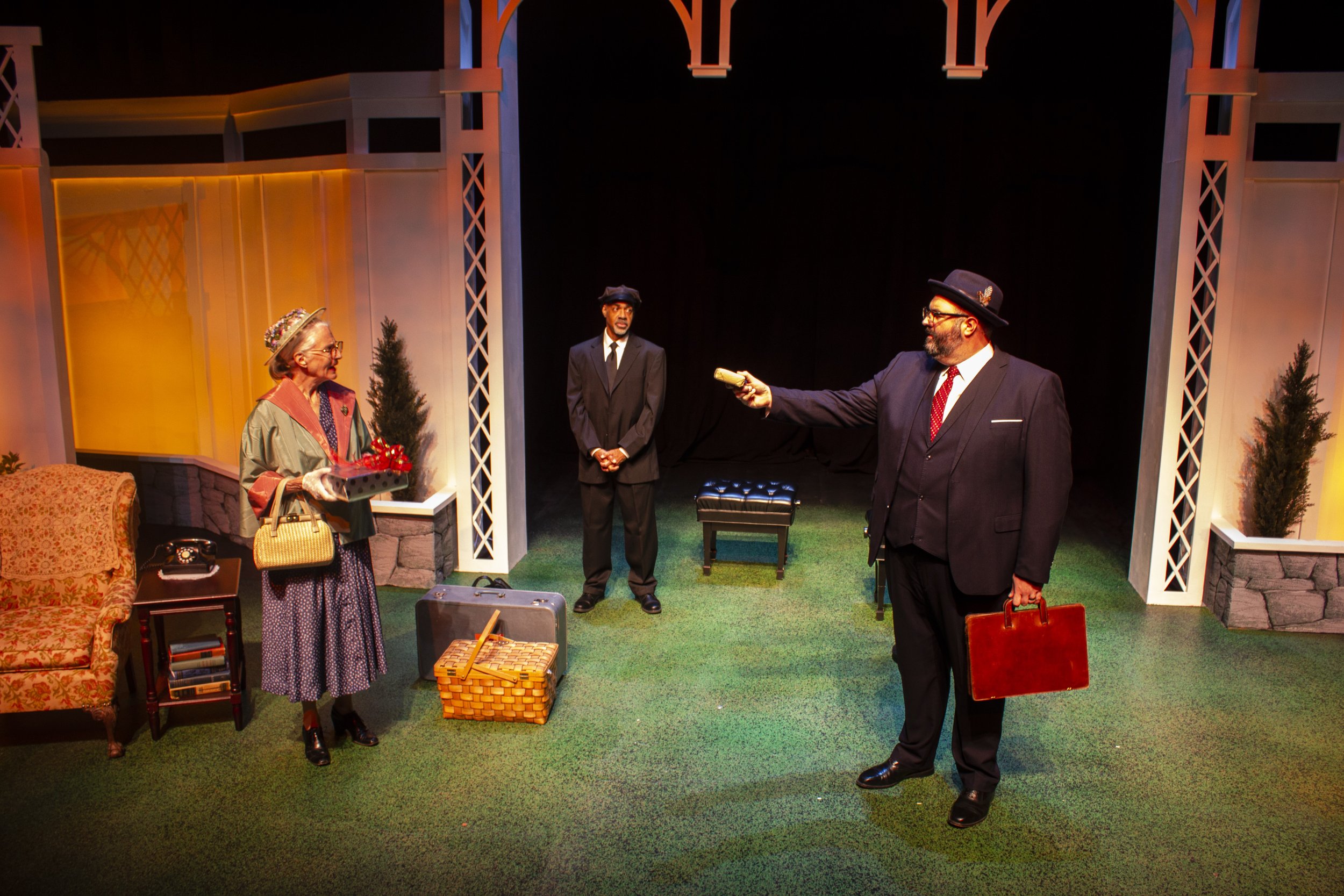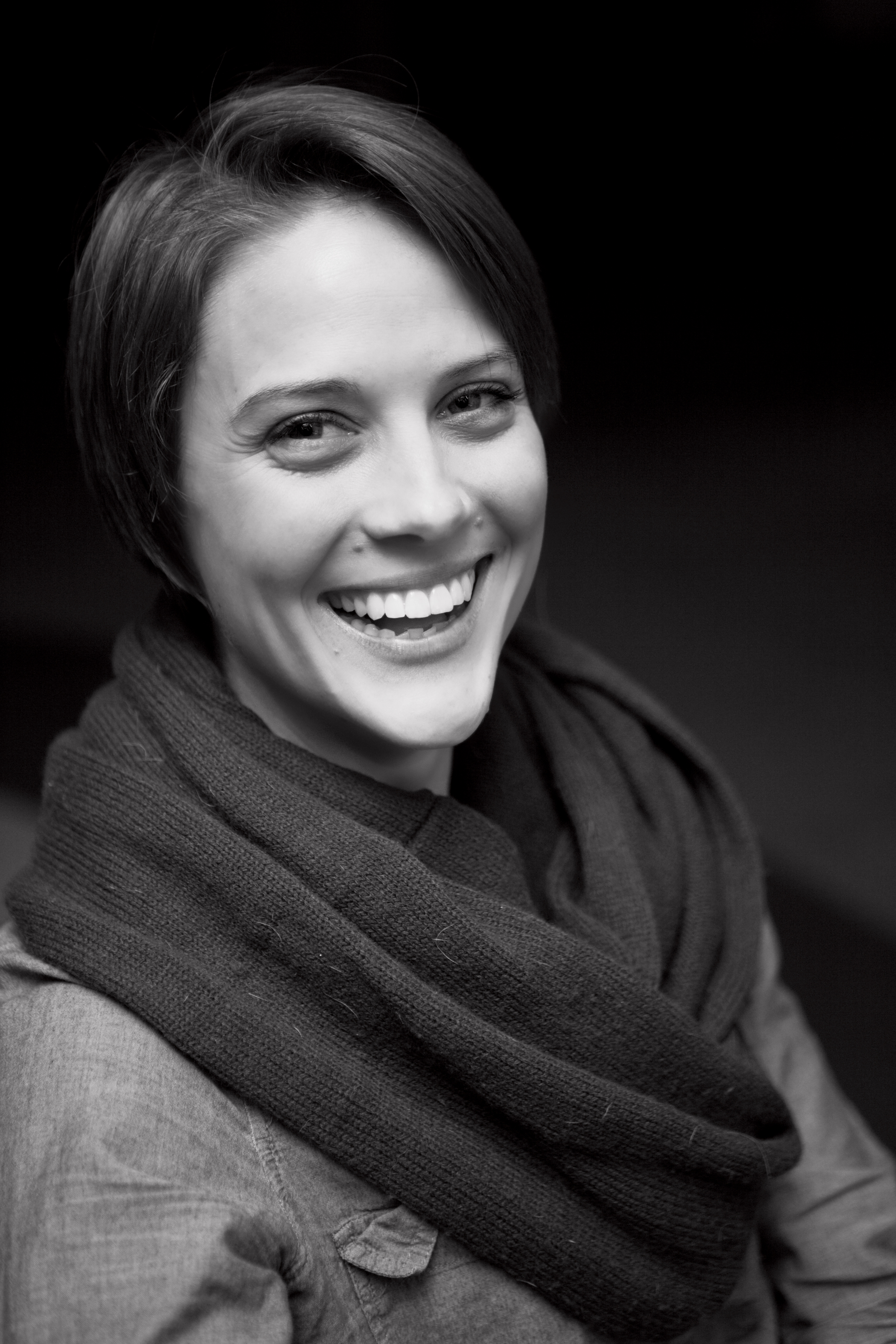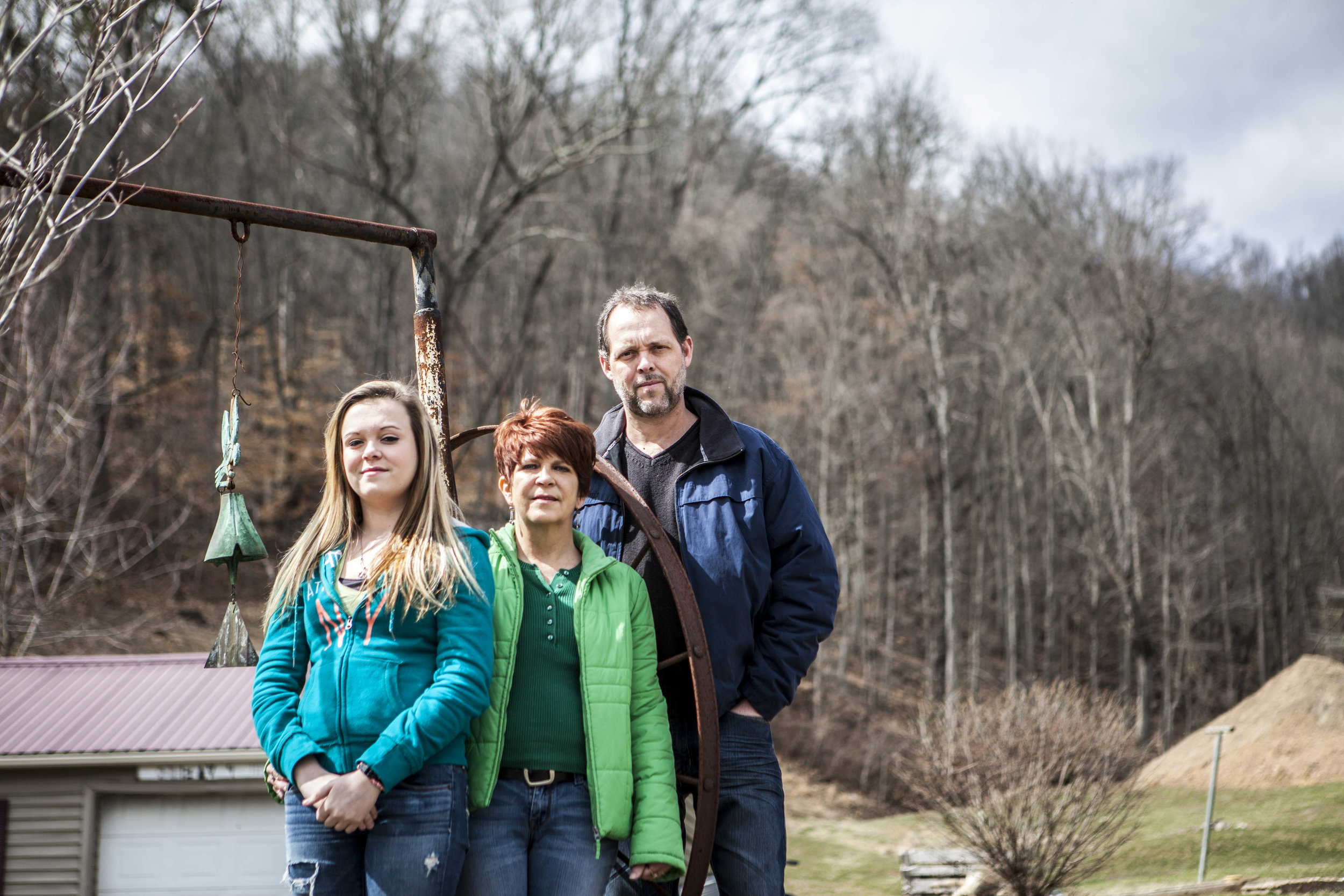Taking The Stage

A Conversation With Greenbrier Valley Theatre’s Matt Campbell
Story by Greg Johnson
Photos courtesy of Matt Cambell
Portrait by Mary Baldwin
In January 2021 Matt Campbell arrived in Lewisburg with a challenging task: succeeding the Greenbrier Valley Theatre’s longtime artistic director and guiding light, Cathey Sawyer. In her 30 years at GVT, Sawyer had turned the local theatre from a shoestring summer operation with community players working in a barn into West Virginia’s official state professional theatre, operating out of a $2.5 million downtown complex with union actors and a million-dollar annual budget. Her three-decade career at GVT was filled with hits, and while theatres around the country were closing, GVT was flourishing. In short, she was going to be a tough act to follow.
Despite that, 120 people applied for the job. So how, exactly, did someone who grew up in Mercer County playing high school football, who was living in the Midwest, end up with it? It’s a long story.
Matt Campbell readily admits he wasn’t a typical theatre kid. His family was sports-oriented. His older brother played football for Virginia Tech. His sister was a cheerleader. But besides sports Matt had another interest that ended up being his back door to the theatre world: music. By the time he was a teenager he was singing at church and in a school play, and at 17 he first appeared in the summer outdoor musicals at Theater West Virginia in Beckley.
After an unsuccessful, mostly experimental, year at Concord University in Athens, where he focused on his theatre classes and paid scant attention to the others, he spent a summer performing in Jekyll Island, Georgia, before embarking on a cross country tour playing young Teddy Roosevelt in Buffalo Soldiers. He had a revelation on tour. “I was a terrible actor and I really didn’t know what I was doing,” he confesses. “I took my father to a restaurant and broke him the news that I had decided to move to New York and go to acting school. He said he wasn’t going to financially support me, which I later realized was a gift. Having to make it on my own helped me become resilient.”
He credits his New York experience at Circle in the Square with helping him discover who he was as an actor and a person. He paid his dues, and his bills, by continually auditioning and taking roles. “Auditions teach you humility,” he observes. “Unless you’re a top tier actor, you’re constantly peddling yourself just to find work. It took me a long time to learn to accept rejection and realize it wasn’t personal.”
He spent 9 years based in New York City, honing his acting skills and developing a specialty in stage combat. “I was athletic, so fight choreography interested me. I went for a 16-year stretch where, in addition to whatever I was doing on stage, I was also hired as a fight captain/choreographer. My acting career wasn’t turning out to be as music-focused as I’d imagined. They were hiring me to play not very nice people who fought.”
He moved from New York to the Midwest, where Jim and Ann Lile, his former professors at Concord, were teaching at Missouri Southern State University. He finished his undergraduate degree there and went on to earn an M.F.A. in Directing from Illinois State University. “My old roommate in New York used to tell me I’d make a good director,” he remembers. “I used to think he meant I wasn’t a good actor, but he was pointing out my tendency to look beyond my character, at the larger picture of what was happening on stage. I wanted to be able to teach in higher education, and I knew college programs assumed directors could teach acting, but they didn’t assume actors could teach directing. That’s why I focused on directing.”
Workaday actors have complex resumes, cobbled together from dozens of gigs, hither and yon. If a director or theatre or festival particularly likes them, they’re often invited to return. Campbell’s ever- growing resume included 16 shows at the Surflight Theatre in Beach Haven, New Jersey, and 5 years as the Associate Artistic Director at the Missouri Shakespeare Festival in Joplin.
In 2014 he was hired to chair the theatre program at Viterbo University, a private Catholic school in LaCrosse, Wisconsin. The following year he went down to Madison to see Stephanie Harter- Gilmore, an actress and singer he previously hired at Missouri Shakespeare, who was touring with Beauty and the Beast. Dinner led to dating, and eventually she went up to Door County to see him in a Peninsula Players production of The Full Monty. Each cast member in the popular vacation spot had been provided with a private cabin, which turned out to be a perfect recipe for romance. Stephanie moved to Wisconsin, then after going to Arizona to play Guinevere in Camelot, she returned to Wisconsin to teach voice at Viterbo. They married in 2017.
So much for the backstory. We were still curious about what led Matt and Stephanie, who is now the very popular music teacher at Lewisburg Elementary School, to move to the Greenbrier Valley. It was time for the harder questions.
GVQ: You seemed to have a pretty good career going in the Midwest. Did you ever imagine that you would return to West Virginia?
Matt: Truthfully, no. When I left West Virginia 20 years ago, my only theatre experience was Theatre West Virginia, doing local plays like Honey in the Rock and The Hatfields and McCoys. I’d never heard of GVT. I didn’t know about the Contemporary New Works Festival in Shepherdstown or West Virginia Public Theatre in Morgantown. I didn’t know what was available here. I took West Virginia History in eighth grade and I knew Lewisburg existed, but I didn’t realize all the town had to offer.
GVQ: What brought it to your attention?
Matt: Melissa Robinette. Melissa, who everyone calls Melrob, was part of our family of friends in New York. We lived down the street from her in Queens. We were close – we had holiday meals together and we had the key to her apartment and she had the key to ours. Melrob had done shows at GVT, and she was always going on about what a gem Lewisburg was. She loved GVT, she loved the actors and she loved the community. She used to say, “I’m going to live there someday.” And now she does. She and her husband live in Alderson. She was the one who told me Cathey was retiring and encouraged me to apply for the Artistic Director position. She caught me at the right time. I loved my students at Viterbo, but I wasn’t feeling very fulfilled in academia.
GVQ: Is it everything she promised?
Matt: Lewisburg is magical. My friends compare it to Stars Hollow, the quaint, quirky little town in Gilmore Girls that has a special warmth to it. Lewisburg has great people, good food, constant entertainment and a lot going on artistically. Of course, something I didn’t count on was the pandemic. When I was hired, my starting date kept getting pushed back, and even once we moved here and I had a six-month orientation period working with Cathey, there was a lot we couldn’t do because we were essentially shut down.
GVQ: COVID was particularly frustrating for people in the performing arts.
Matt: We didn’t know if or when our audience would come back! We didn’t know much about respiratory transmission, masking, air ventilation systems or keeping proper distances between people. I was naïve. At first, I just thought, okay we’ll keep a little distance from each other and we won’t choose shows where people kiss. It ended up being a lot more complicated than that. Cathey and I had planned to take our longtime supporters to lunch, so she could introduce me to them, but we couldn’t do it. When we finally opened our doors, there were people who were excited to come back and people who wouldn’t come back because they were hesitant to be in a group setting.
GVQ: So it was a trial by fire?
Matt: I was dealing with moving my family here, living temporarily in actor housing, taking over at a theatre most of the community had never known without Cathey Sawyer, and dealing with staff who had been furloughed. Cathey was wonderful, of course, and she was always very upfront about everything, but there was only so much we could do. No one knew how to run a theatre during a pandemic.
GVQ: Now that you’ve had a chance to settle in, what are some of your goals for GVT?
Matt: I want to continue focusing on our educational programming and growing our impact across the state. There is a wonderful tradition and legacy of strong theatre education at GVT. We have the after-school programs, the summer camps, and we are currently partnering with Greenbrier County Schools on STEAM education (Science, Technology, Engineering, Arts and Mathematics) through dramatic practices. It’s a very exciting time and we look forward to all the wonderful things and new initiatives we have in store. Additionally, we are focusing on trying to build a younger audience. Across the country, most theatre season ticket subscribers are between 57-60. The most common theatergoers in the U.S. are white women between 50-55. At GVT we have a wonderful core of supporters who are mostly 60 and older. We’ve got to figure out what the next generation of theatre patrons and arts advocates look like. In season planning we need to do things our core audience will enjoy, but we also need to do things that will draw younger audiences. We’re planning some focus groups with some younger people in the community, to ask them what sort of entertainment they enjoy.
GVQ: Any idea what you’ll hear?
Matt: We know young people like musicals. We know they’re technology- centered. We also know they’re talking about diversity, inclusion, mental health issues, the BIPOC experiences (Black, Indigenous and People of Color), and different kinds of hero’s narratives. I think young audiences want to feel that what they’re watching has weight and gravity and makes a difference. We need to produce work that speaks to those interests.
GVQ: It sounds like a balancing act - trying to please your core audience, but trying to attract a new one at the same time.
Matt: I don’t think our job is to provide something that everybody likes. I think our job is to provide a space where everyone feels welcome, and let people associate with the art in their own way. Of course, we want our audiences to enjoy the work and leave the theatre satisfied. However, art is subjective in so many ways and often we look to the overall experience of a theatrical event.
GVQ: You’re in a business where you’re bound to have hits and misses. How do you handle the misses?
Matt: When people tell me they didn’t like something, I ask them why they didn’t like it, and I listen to them. Truthfully, not everybody is going to like the theatre, just like not everybody likes football or basketball. We’re not trying to make everyone like it. My own brother-in-law once told me, very honestly, “I’m afraid to go to the theatre because I’m afraid I won’t understand what’s going on and I won’t like it.” I appreciated hearing that because I’m sure he’s not the only person who feels that way.
GVQ: How important is fundraising in keeping the doors open?
Matt: Fundraising is key because theatre is so expensive to produce. If you could run a theatre based on ticket sales, we’d have a lot more of them. 85% of our income is from donations and grants, and only 15% or less comes from ticket sales.
GVQ: It used to be that when you went to GVT, you knew or at least recognized most of the people in the audience. That’s not true anymore.
Matt: As with anything, it’s about balance. We have so many dedicated patrons at GVT. We love seeing them and count on their patronage in many ways. However, last year 46% of our audience was from outside Greenbrier County. We credit that to advertising, particularly our digital advertising. We want to honor and serve our community, but unfortunately, our community isn’t large enough to keep the theatre full. Hopefully,` the experience is good enough that our visitors will want to keep coming back.
GVQ: What else can we look forward to at GVT?
Matt: We want to produce works that enlighten, challenge and entertain people. That comes from a mixture of great playwrights like Neil Simon, Tennessee Williams, and Chekov, and contemporary scribes like Kate Hamill, Paula Vogul, and Marco Ramirez. We’re looking forward to sharing classic shows that people are familiar with, from farces to musicals, and we’re excited to reimagine narratives for today’s audiences.
GVQ: It’s a little late to be saying it, since you’ve been around since 2021, but we’re excited to have you here, Matt.
Matt: Thank you. As a family, we’re excited to be here in Lewisburg. We want to be a part of this community and help our area thrive. There are so many incredible people and places in Greenbrier County and the state of West Virginia. We want to help others discover it. I also hope we can find the goodness and empathy with art/theatre to make a lasting impression on the folks who come through our doors.










